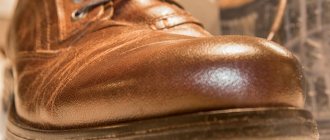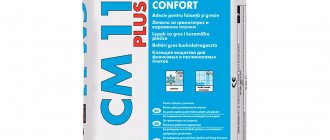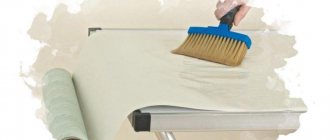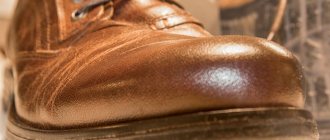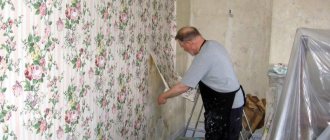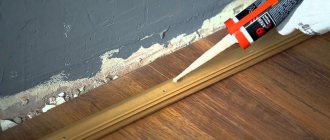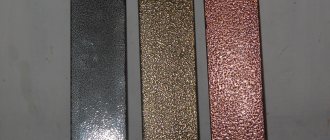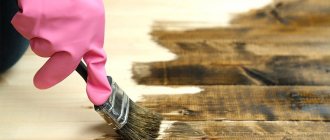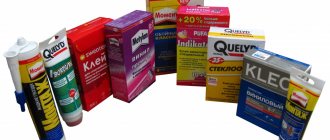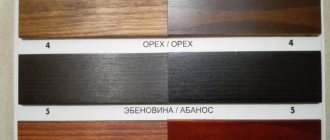| Place | Name | Characteristics in the rating |
| The best PVA glue |
| 1 | Kleiberit 303.0 | The most waterproof PVA glue |
| 2 | Krass PVA PVA D3 | The most transparent wood glue |
| 3 | Moment Joiner PVA Universal | The best domestic glue |
| The best polyurethane adhesives |
| 1 | Kleiberit 501.0 | The best all-purpose glue |
| 2 | SOUDAL 66A | Highest adhesion |
| 3 | Akfix PA370 D4 | Fast drying and excellent heat resistance |
| The best resin-based adhesives for wood |
| 1 | Titebond Original Wood Glue | The best professional glue |
| 2 | Uhu plus endfest 300 | The strongest glue |
| 3 | EDP epoxy glue | Best price |
| Modern synthetic based adhesives |
| 1 | Titebond III Ultimate Wood Glue 1415 | The most harmless glue |
| 2 | Quilosa Bunitex P-55 | Does not lose its properties over time |
| 3 | Forbo 650 Eurostar Fastcol | High fixation |
Kinds
The greatest demand now is for PVA, polyurethane compounds and resin-based mixtures. They differ significantly from each other.
Features of popular adhesives for wood furniture:
- PVA – this name hides a polyvinyl acetate dispersion. This substance is non-toxic, so it can be used indoors for repairing wooden products. It is waterproof, affordable, and very easy to work with.
- Resin mixtures are especially popular among woodworkers and homeowners. Epoxy compounds provide reliable adhesion to surfaces made of wood and other materials. The substances are not afraid of moisture and aggressive chemical elements.
- Polyurethane adhesive can withstand fairly high loads; it is especially suitable for use on wooden furniture legs. The glue can be used in extreme conditions.
When choosing a product for wood, you need to consider the following points:
- Connection density.
- Toxicity level.
- The period of complete hardening.
- Moisture resistant.
- Seam strength.
PVA
PVA glue is considered to be a stationery glue, but it is also successfully used when working with wood. This is a safe and high-quality product that not only reliably connects surfaces, but is also able to withstand high humidity and liquids for a long period.
Woodworker PVA is considered the best adhesive for wood. With its help, you can glue different types of wood together and with building materials such as chipboard, plywood, MDF.
For reliable setting after joining, the parts must be pressed tightly against each other for half an hour. Complete hardening of the composition, when the parts can already be used, occurs within 24 hours. This wood adhesive composition does not change the color of the wood and does not disturb its structure. Operation is possible under conditions from 5 to 30 degrees.
Reference! Woodworkers and home craftsmen note that this composition is excellent for wood due to its quick setting, strength and accessibility.
KLEIBERIT is a waterproof PVA composition with universal characteristics. They can be used to connect wood with other surfaces. What sets it apart is its ability to glue exotic woods.
After drying, this glue turns white. It can withstand temperatures from -30 degrees. It is chosen for its setting speed, frost resistance and resistance to liquids. The downside is the importance of strictly following the instructions.
Wood glue
Wood glue is based on aliphatic resins. The material is used for joining wooden products - home and outdoor furniture. One of the best would be bone glue, which is great for antiques.
After applying this glue, you need to dry it under pressure for some time. Alcohol can be used to disassemble the connection.
Syndeticone
Syndeticone glue is prepared from carpentry by adding lime and powdered sugar. The material has an increased level of structural adhesion. It is waterproof and resistant to chemicals.
Reference! The disadvantage of such a product for wood will be the long manufacturing process. To obtain good glue, you will need to soak it in liquid for 24 hours.
Glue BF
Thermosetting or BF adhesive composition connects elements when exposed to high temperatures. It can be single- or multi-component. The first option can be purchased ready-to-use. Multicomponent glue must first be prepared by mixing several substances.
BF can be inorganic, organic and organoelement. Available in liquid, dry and solid form. Water-based products take longer to harden, which must be taken into account when choosing, but substances with solvents set almost instantly.
Epoxy resin
Epoxy resin glue is good for gluing wood together. It's also great for filling gaps. It is waterproof and has optimal strength characteristics.
The glue is two-component, that is, it consists of a resin and a hardener. To prepare, they need to be mixed in a certain proportion, as indicated in the instructions. The positive side is that this furniture glue does not shrink.
Reference! Different ratios of elements give the glue different properties, which can be controlled under certain conditions. What’s also good is that gluing does not require long pressing.
Urea resin
Urea resin adhesive is prepared from thiourea or synthetic urea through a heating process. Such compositions create very strong compounds of wood products. They are resistant to moisture and can be used in extreme conditions.
This glue is acid-curing, and after mixing with a hardener its service life is short - up to 4 hours. It is used for hot pressing.
Reference! This glue is transparent, which is very beneficial when gluing wooden furniture.
Polyurethane glue
When high strength, resistance to liquids and mechanical loads are important, you can safely opt for polyurethane adhesive.
A well-known representative is Soudal 66 A, produced in Belgium. It can be used in harsh environments to bond wood products even if they are wet. It is compatible with most building materials.
Reference! When hardened, the composition foams, which allows it to fill all seams and cracks.
Polyurethane wood adhesive mixture can be used for complex carpentry work indoors and outdoors. They love it for its excellent strength, water resistance, and reliable grip.
Kleiberit 501.0 is another polyurethane composition, but from a German manufacturer. This is a good universal furniture adhesive that is not afraid of high temperatures and moisture. Can be used when combining different materials.
The adhesive receives good reviews due to its convenient use, flawless connection and optimal consistency. When working with it, it is important to ventilate the room and protect the skin.
Liquid Nails
Liquid nails are a good option for furniture. They consist of polymers and rubber. The material is distinguished by its plasticity and strong connection. This is an alternative to conventional nails when work needs to be done quietly and cleanly. The composition may also contain solvents.
Advantages of using liquid nails for furniture:
- High strength - this glue can withstand up to 80 kg per cm;
- The mixture does not disturb the surface structure.
- Can be used to connect uneven substrates.
- Not subject to corrosion.
How to clean a surface from dried glue
Compliance with the technology guarantees strong bonding, but often smudges and sagging remain on the seams after drying under pressure. If you do not remove it in time, it will ruin the aesthetic appearance of the product.
The simplest household methods:
- Soak with acetone (varnish/varnish liquid) and sand;
- Use the “anti-glue” composition to soften the sagging;
- Heat the “Superglue Moment” with a hairdryer and scrape it off with a knife;
- Carefully remove rough stains with any cutter;
- Moisten a piece of rag with white spirit and wipe the contaminated area.
Among household solvents that can be used to remove PVA wood glue, medical alcohol, gasoline and acetic acid are well known. Carpenters do not use such methods. They have at their disposal special solvents, acids, and components for mixing compositions. They are also suitable for cleaning seams with exposed adhesive.
Among household solvents that can be used to remove PVA wood glue, medical alcohol, gasoline and acetic acid are well known.
Each wood glue has its own characteristics. Some compounds are not suitable for light-colored wood layers. Others will be optimal for layer-by-layer gluing or applying thin veneer to a furniture panel. When working with each of them, it is important to be aware of the “pros” and “cons”, to work carefully, avoiding contamination and rough deposits.
Results
Choosing wood glue is an interesting process. The thing is that you need to take into account a large number of criteria, starting with the manufacturer and ending with the composition of the glue. But this is the only way to choose the adhesive composition that is most suitable for you for gluing wooden elements.
It is worth considering that before purchasing such glue, you still need to consult with a specialist. He will not only advise, but also select the most optimal option taking into account your goals.
How long does it take for glue to dry?
GOST 17005–82 standards are carefully thought out for all glue groups. They regulate the class of the composition, according to its physical and mechanical qualities. Each variety has its own application technology and drying time for the composition. Often, novice carpenters and carpenters are a little disoriented by this diversity.
In order not to get confused with the technology, novice craftsmen use the instructions on the packaging of glue for wooden structures. There are four resistance groups, differing in bond strength and degree of moisture resistance. For high-quality gluing, it is important that the selected composition meets the basic operational requirements.
The gluing time for all compositions is different - from 2 hours to 24 hours (indicated in the instructions). If the parts are kept under pressure in a room with optimal temperature and humidity, the holding time can be reduced.
You should not subject the product to increased load for the first 2-3 days, since polymerization and slight absorption of moisture from the glue are still ongoing. PVA wood glue is an ideal product for working at home; drying takes about 24 hours.
The gluing time for all compositions is different - from 2 hours to 24 hours.
The best PVA wood glue
One of the most environmentally friendly wood glues is a water emulsion of polyvinyl acetate. There is no toxic odor during work, so ventilation is not a mandatory requirement for a carpentry workshop. The availability of the product allows it to be widely used. Experts paid attention to several models.
Kleiberit 303.0
Rating: 4.9
German wood glue Kleiberit 303.0 has many advantages. But experts focused on such quality as water resistance. It was this fact that became the key in determining the winner of the rating. This PVA glue is also the leader in sales in our country. Consumers managed to appreciate the versatility of the adhesive composition. With its help, you can connect different types of wood, fiberboard, chipboard, veneer, etc. Some craftsmen admire working with hard wood. The gluing process itself does not cause any difficulties. It is enough to press the parts to be joined for 6...10 minutes to get a single whole.
In addition to moisture resistance, users note resistance to low temperatures (down to -30°C). The white color after drying also does not cause discomfort.
Advantages
- strength;
- ease of use;
- resistance to low temperatures;
- moisture resistance;
Flaws
- not detected.
Advice from the experts
Before starting work, you need to prepare the necessary tools, clean the surfaces that will be glued and carefully study the instructions.
Reference! After gluing, it is important to press the elements for a while to ensure reliable adhesion. This must be done for at least 10 minutes.
When you need to glue it together forever, synthetic glues are better suited, but if you need to further disassemble the furniture, you should use a natural one, like casein or bone glue.
For light types of wood, it is better to use Joiner glue, which adapts to the shade of the material. Casein glue is contraindicated in this case.
When choosing PVA glue, you need to pay attention to the consistency. If it is too liquid, you should not take it, because this indicates hypothermia, which has a bad effect on the adhesive ability.
When choosing glue, it is better to give preference not to universal, but to special compounds that are intended for certain materials and conditions.
How to glue furniture, how to choose and use wood glue correctly (2 videos)
Types of furniture glue (15 photos)
Wood gluing technology
Before starting work, it is recommended to stock up on all the necessary tools and protective equipment. Overalls, goggles and a respirator will protect the respiratory tract from harmful fumes, glue residues and wood dust.
Any wood glue will give excellent results if the surface is carefully leveled. Well-dried wood is sanded with fine sandpaper, cleaned of dust, and then degreased.
Wood of different types is glued together approximately the same way:
- The parts must be positioned horizontally so that the mass does not flow to one side. The glue is applied in a zigzag pattern to spread it freely over the surfaces;
- Working with two-component compositions is no different from other adhesive mixtures, only the base is applied to one contact wooden surface, the hardener is applied to the other;
- For better adhesion, wood glue is applied in a double layer, allowing the initial impregnation to dry a little. Next, these parts are connected and pressed tightly to enhance adhesion strength;
- When gluing, excess composition appears on the seams; they cannot be left until polymerization. In liquid form, the glue is much easier to remove. Depending on the density, the excess is cut off with a knife, removed with a sponge with a solvent, or wiped with a rag.
Any wood glue will give excellent results if the surface is carefully leveled.
Do I need to degrease surfaces?
Most offers on the consumables market are marked “Clean and degrease the surface.” Compliance with standards is the best prevention of poor-quality connections. It is important not only how to properly clean, but also how to degrease the surface. The main problem is to completely remove grease stains and resin pockets from coniferous wood.
Removing oily stains from wood is done with a soft cloth soaked in a suitable solvent. Mechanical cleaning and sanding with fine sandpaper of the area prepared for gluing wood is often required.
Removing oily stains from wood is done with a soft cloth soaked in a suitable solvent.
About glue water resistance classes
In Europe, each construction and other product has its own definitions. As for glue, it also has designations. Most often, when talking about this, they mention the water resistance classes of glue according to DIN EN 204 standard , which has successfully taken root in Russia.
Let's talk briefly about each of these classes.
- D1 . Lowest water resistance class. Adhesive compositions of this class can be used indoors, the temperature in which is less than 50 degrees Celsius. The moisture content of the wood should be no more than fifteen percent. Brief exposure to water is allowed.
- D2 . A little higher class. It can be used in the same rooms, but the permissible moisture content of wood material is slightly higher - up to eighteen percent. Brief exposure to water is allowed.
- D3 . Quite a popular class of glue. It can be used not only inside a house or apartment, but also outside. Brief exposure to water is completely acceptable. At the same time, D3 class adhesives themselves can be used with more damp wood materials.
- D4 . Like the D3, the D4 is suitable for both indoor and outdoor use. Withstands exposure to water, but still requires a protective coating to protect the adhesive.
Each water resistance class has its own characteristics
Adhesives for carpentry
Interesting categories are sturgeon, flesh and bone species.
- The hide composition is made from the residues of raw leather processing, namely the protein extracted from the leather.
- It goes on sale in a dry state, so it requires additional preparation before gluing.
- Fish glue is created from fish fins and bladders. The extremely high price of the glue suggests its use in restoration work.
Most often it is used when working with antique furniture and musical instruments.
Bone glue, consisting of certain substances obtained from bone mass, is used to restore rare pieces of furniture.
Rating of the best wood adhesives
| Nomination | place | Name of product | price |
| The best PVA wood glue | 1 | Kleiberit 303.0 | 291 ₽ |
| 2 | ULTIMA JOINER PVA | 129 ₽ | |
| 3 | Moment Super PVA D3 moisture resistant | 490 ₽ | |
| 4 | TEX PVA Carpentry Professional | 149 ₽ | |
| 5 | Krass PVA PVA D3 | 205 ₽ | |
| The best polyurethane adhesives for wood | 1 | Titebond Polyurethane Wood Glue 2300 | 385 ₽ |
| 2 | Kleiberit 501.0 | 477 ₽ | |
| 3 | SOUDAL 66A | 450 ₽ | |
| The best resin wood glues | 1 | UHU PLUS ENDFEST 300 | 503 ₽ |
| 2 | TITEBOND ORIGINAL WOOD GLUE | 480 ₽ | |
| 3 | EDP EPOXY GLUE | 250 ₽ | |
| 4 | Titebond III Ulimate 1416 | 590 ₽ |
How to choose
Choosing wood glue is not always as easy as it seems at first glance. There are a number of important things you need to know:
- Compound . All adhesives are different in composition. There are bone, flesh, fish, PVA, casein, vegetable. Choose the one with which it will be more convenient for you to work.
- Water resistance . Please note that not all adhesives are waterproof. This often plays an important role in choosing the required material. Choose one with increased moisture resistance.
- Temperature . Some have the properties of melting at high temperatures, which can be an extremely unpleasant fact during operation.
- Freezing time. Some really freeze “forever”, but this can take about two days! If you don’t have that kind of time, then choose an option that hardens in less than a day.
- Several variants. If you are practicing or want to practice professionally, then it is better to have several types of adhesives in your arsenal. But under no circumstances should they be mixed.
Advantages and disadvantages of different types of wood adhesives
| Glue type | Advantages | Flaws |
| PVA | + affordable price + environmental friendliness + versatility + ease of use | - insufficient strength - afraid of moisture — destroyed at high temperatures (+60°C) |
| Polyurethane | + high strength to dynamic loads + inert attitude to temperature changes + resistance to moisture + UV resistant | - high price - Strong smell |
| Based on organic resins | + connection strength + versatility of use + resistance to water and aggressive compounds + reasonable price | - skin protection required — high consumption - requires precise mixing of components |
Adhesive product "BF"
When gluing wooden parts, an adhesive with a specific index is required. This adhesive has good resistance to chemical and biological influences, so it is most often used for outdoor work.
The glued parts cannot be destroyed by gasoline-based solvents. When working with BF glue indoors, it is necessary to ensure good ventilation of the space. This glue is not suitable for household items or wooden containers.
The best polyurethane adhesives for wood
Polyurethane adhesives are highly durable. Glued parts can be subjected to both static and dynamic loads. The seam is not afraid of moisture, sunlight, or temperature changes. Our review presents the best polyurethane products.
Titebond Polyurethane Wood Glue 2300
Rating: 4.9
A real breakthrough in the field of adhesive technology was the development of a polyurethane composition for wood, Titebond Polyurethane Wood Glue 2300. Experts unconditionally gave this product from the USA the first place in the rating. The manufacturer managed to find the optimal balance between pressing speed (45 min) and retention time of working properties (20 min). The glue perfectly bonds any wood-based materials, from natural wood to wood chip products. However, the scope of application does not end there; metal, plastic, ceramics, stone and a number of other materials can be permanently glued.
The product is water resistant, but it is not recommended to keep the knots formed in conditions with constantly high humidity or under water. The composition is not afraid of frost, but before use it should be warmed to +12°C.
Advantages
- fast gluing;
- versatility;
- high seam strength;
Flaws
- high price.
